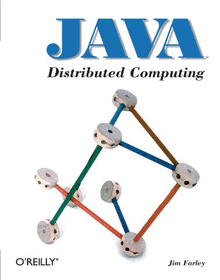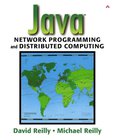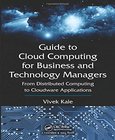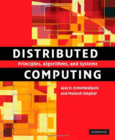Java Distributed Computing

Book Details:
| Publisher: | O'Reilly Media |
| Series: | OReilly |
| Author: | Jim Farley |
| Edition: | 1 |
| ISBN-10: | 1565922069 |
| ISBN-13: | 9781565922068 |
| Pages: | 386 |
| Published: | Jan 08 1998 |
| Posted: | Nov 19 2014 |
| Language: | English |
| Book format: | |
| Book size: | 1.1 MB |
Book Description:
Distributed computing and Java go together naturally. As the first language designed from the bottom up with networking in mind, Java makes it very easy for computers to cooperate. Even the simplest applet running in a browser is a distributed application, if you think about it. The client running the browser downloads and executes code that is delivered by some other system. But even this simple applet wouldn't be possible without Java's guarantees of portability and security: the applet can run on any platform, and can't sabotage its host.Of course, when we think of distributed computing, we usually think of applications more complex than a client and server communicating with the same protocol. We usually think in terms of programs that make remote procedure calls, access remote databases, and collaborate with others to produce a single result. Java Distributed Computing discusses how to design and write such applications. It covers Java's RMI (Remote Method Invocation) facility and CORBA, but it doesn't stop there; it tells you how to design your own protocols to build message passing systems and discusses how to use Java's security facilities, how to write multithreaded servers, and more. It pays special attention to distributed data systems, collaboration, and applications that have high bandwidth requirements.In the future, distributed computing can only become more important. Java Distributed Computing provides a broad introduction to the problems you'll face and the solutions you'll find as you write distributed computing applications.Topics covered in Java Distributed Computing: Introduction to Distributed Computing Networking Basics Distributed Objects (Overview of CORBA and RMI) Threads Security Message Passing Systems Distributed Data Systems (Databases) Bandwidth Limited Applications Collaborative Systems
Download Link:
Related Books:
Java Network Programming and Distributed Computing
Java's rich, comprehensive networking interfaces make it an ideal platform for building today's networked, Internet-centered applications, components, and Web services. Now, two Java networking experts demystify Java's complex networking API, giving developers practical insight into the key techniques of network development, and providing extensive code examples that show exactly how it's done. David and Michael Reilly begin by reviewing fundamental Internet architecture and TCP/IP protocol concepts all network programmers need to understand, as well as general Java features and techniques that are especially important in network programming, such as exception handling and input/output. Using practical examples, they show how to write clients and ser...
Guide to Cloud Computing for Business and Technology Managers
From Distributed Computing to Cloudware Applications
Guide to Cloud Computing for Business and Technology Managers: From Distributed Computing to Cloudware Applications unravels the mystery of cloud computing and explains how it can transform the operating contexts of business enterprises. It provides a clear understanding of what cloud computing really means, what it can do, and when it is practical to use. Addressing the primary management and operation concerns of cloudware, including performance, measurement, monitoring, and security, this pragmatic book: Introduces the enterprise applications integration (EAI) solutions that were a first step toward enabling an integrated enterprise Details service-oriented architecture (SOA) and related technologies that paved the road for cloudware applications...
Distributed Computing
Principles, Algorithms, and Systems
Designing distributed computing systems is a complex process requiring a solid understanding of the design problems and the theoretical and practical aspects of their solutions. This comprehensive textbook covers the fundamental principles and models underlying the theory, algorithms and systems aspects of distributed computing. Broad and detailed coverage of the theory is balanced with practical systems-related issues such as mutual exclusion, deadlock detection, authentication, and failure recovery. Algorithms are carefully selected, lucidly presented, and described without complex proofs. Simple explanations and illustrations are used to elucidate the algorithms. Important emerging topics such as peer-to-peer networks and network security are also...
2007 - 2021 © eBooks-IT.org



